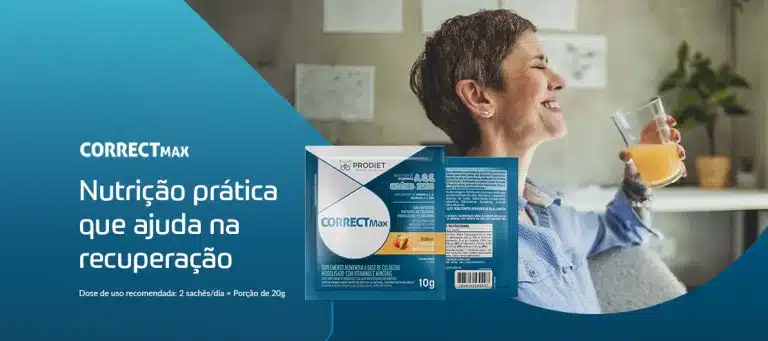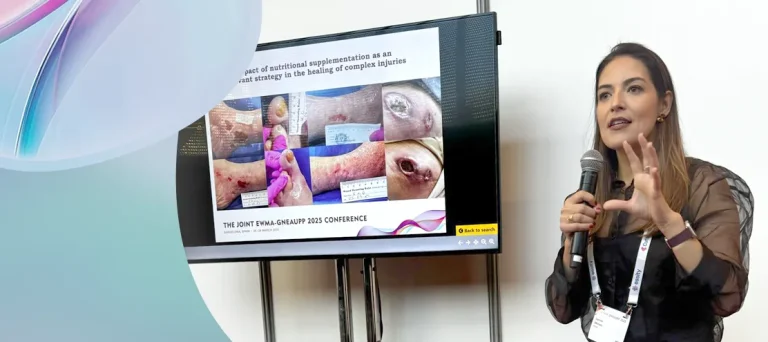In the world of health and nutrition, enteral diet administration is a practice that requires careful attention and technical knowledge. Ensuring that patients receive the necessary nutrients in the right way is a crucial responsibility.
In this article, we will explore the main precautions that should be taken when administering the enteral diet. From choosing the right type of formula to administration technique and hygiene, every detail plays a key role in the success of this process.
Want to know more about how to ensure the correct administration of the enteral diet? Read on to find out about the necessary precautions and provide quality nutritional care.
What is enteral nutrition?
Enteral nutrition is a therapeutic method that consists of administering nutrients directly into the gastrointestinal tract via a nasogastric or nasoenteral tube, gastrostomy or jejunostomy.
This procedure is indicated when the patient cannot or is unable to eat food properly, whether due to swallowing difficulties, diseases that affect the absorption of nutrients or clinical conditions that require specific nutritional support.
Enteral nutrition is prescribed by health professionals, such as doctors and nutritionists, based on an assessment of the patient's individual needs. This approach aims to ensure adequate intake of nutrients and calories, contributing to the recovery and/or maintenance of the patient's nutritional status and health.
What precautions should be taken when administering enteral nutrition?
The administration of enteral nutrition requires a meticulous and attentive approach to ensure the safety and efficacy of this process. It is essential to select the right formula, taking into account the patient's specific nutritional needs and clinical condition.
In addition, proper hand and equipment hygiene is essential to prevent infections.
The choice of route of administration by the healthcare professional - whether by nasogastric tube, nasoenteral tube, gastrostomy or jejunostomy - should also be carefully evaluated based on the patient's condition.
Constant monitoring of diet tolerance, possible complications and necessary adjustments are crucial to ensure that the patient is receiving nutrients properly and safely.
How is the enteral diet administered?
When it comes to enteral diet administration, different methods can be used to ensure that patients receive adequate nutrition according to their individual needs. Below, we will explore some of the main ways of administering the enteral diet:
Administration of the intermittent enteral diet by gravity
In this method, the formula is administered through the force of gravity. The diet is connected to the tube and allows the food to be infused at regular intervals, usually during the day.
It is a convenient option for patients with adequate digestion capacity and who can tolerate a certain amount of volume at once.
Continuous administration by infusion pump
In this method, the enteral diet is administered continuously throughout the day using an infusion pump.
It may be suitable for patients with specific nutritional needs or who have problems tolerating large volumes of food at once.
Intermittent bolus administration
In this method, the formula is administered at regular intervals, using a syringe and a plunger. It's a flexible option, remembering that the important thing is to ensure that the diet is administered slowly to avoid discomfort.
Each form of administration has its own specific indications and considerations, and the choice depends on the patient's clinical needs and tolerance, as well as the supervision and guidance of qualified health professionals.
What is the nursing care for the enteral diet?
Nursing care in the administration of enteral diets is essential to ensure the safety and efficacy of nutritional treatment.
This care involves a series of procedures and monitoring aimed at preventing complications and promoting the recovery and maintenance of patients' adequate nutritional status.
1. Preparing the diet:
- Preparing the diet: this should be done according to the prescription of the health professional (nutritionist or doctor), taking into account factors such as age, weight, clinical and metabolic conditions.
- Strict hygiene: maintain asepsis during the preparation and administration of the diet to avoid contamination.
2. Administration:
- It is necessary to pay attention to the prescribed times and volume, as well as the prescribed form of infusion.
- Infusion rate: begin administration slowly and gradually, adjusting administration according to the patient's prescription and tolerance.
3. Monitoring:
- Checking the probe: regularly check the position and permeability of the probe, avoiding displacement or obstruction.
- Evaluation of signs and symptoms: observe possible signs of intolerance, such as nausea, vomiting, diarrhea or abdominal distension.
- Water balance control: monitor fluid intake and excretion to avoid dehydration or water overload.
4. Hygiene and handling:
- Care of the insertion site: carry out proper cleaning and change dressings as necessary to prevent infection at the insertion site.
Additional Tips
- Patient and family education: advising patients and their families on the importance of enteral nutrition care, reinforcing the importance of hygiene and regular monitoring.
- Teamwork: maintaining effective communication between the nursing team, nutritionists and doctors and other health professionals in order to guarantee comprehensive care tailored to the patient's needs.
Nursing care in the administration of enteral diets is essential to ensure adequate and safe nutrition, preventing complications and promoting the patient's recovery.
Enteral diet: frequently asked questions
What kind of diet can be administered through the enteral tube?
When it comes to enteral feeding, there are a few types of diet that can be used to meet the specific nutritional needs of each patient. This flexible approach aims to ensure that individuals who cannot eat orally receive the essential nutrients for their health and recovery.
There are two main categories of tube feeding diets: homemade diets and industrialized diets.
Artisanal diets
Artisanal diets are prepared in a personalized way, taking into account the patient's individual nutritional needs. They are made up of fresh foods that are processed into a liquid consistency to be administered through the tube.
The composition of these diets can vary according to the health professional's prescription.
Industrialized diets
Industrialized diets, such as those offered by Prodiet, are formulated based on scientific research and developed to meet the specific demands of patients who need tube feeding.
Prodiet understands the importance of providing high-quality nutritional solutions for different stages of life, providing care through science and nutrition.
With a variety of products suitable for different needs, Prodiet diets are designed to ensure adequate nutrient intake, aiding patients' recovery and well-being.
Get to know the options available from Prodiet and find out how we can be partners in caring for your health and nutrition.
Can I administer other liquids through the tube?
It is important to note that tube feeding is designed to provide complete and balanced nutrition, meeting the patient's specific needs. Therefore, the administration of liquids should be done with caution and in accordance with medical and nutritional guidelines.
In general, the priority is to ensure that the patient receives all essential nutrients through the enteral diet, which is formulated to meet their nutritional needs.
In this sense, before administering any other liquid through the tube, it is essential to consult the medical and nutritional team responsible for the patient's care. They will be able to assess the individual situation and provide specific guidance on the safe administration of fluids through the tube, taking into account the patient's nutritional needs and state of health.
The patient's safety and well-being are always a priority and professional guidance is essential for making appropriate decisions regarding tube feeding.
How to prepare the enteral diet?
Preparing the enteral diet requires care and attention to ensure the safe and effective administration of the necessary nutrients. The preparation process can vary according to the type of diet and the form of administration, but some general guidelines can be followed.
Hand and utensil hygiene:
Before starting the preparation, it is essential to wash your hands thoroughly and ensure that utensils such as measuring cups, vials, syringes and administration equipment are clean. This helps to avoid contaminating the diet.
Exact quantity:
Follow your nutritionist's or doctor's instructions on how much diet to prepare. Use the measuring cups provided to ensure accuracy.
Administration time:
If the diet is administered by infusion pump, be sure to adjust the infusion rate, set the time and frequency of administrations according to the prescription.
Homogeneous mixture:
Shake the diet well before administering. This helps to ensure that the nutrients are evenly distributed and prevents clogging of the tube and equipment.
Temperature:
Enteral diets should be administered at room temperature. Make sure that the temperature of the diet is comfortable for the patient, avoiding extremes of cold or heat. It is not recommended to heat the diet.
Immediate administration:
In general, the enteral diet should be prepared and administered immediately. Avoid leaving the diet prepared for long periods, as this can increase the risk of contamination.
Remember that each type of enteral diet and method of administration can have its own particularities when it comes to preparation, so it's essential to follow the instructions provided by the health and nutrition team. And in the case of industrialized diets, it's important to pay attention to the storage and preservation instructions.






